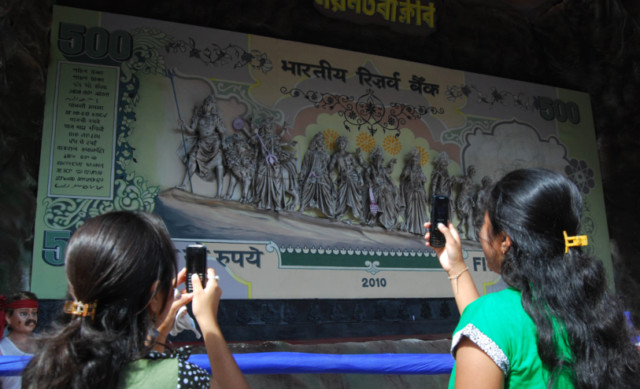
While governments face the brunt of emotion during any currency volatility, in the long/medium term many other local and international factors impact average exchange rates, experts say. Regardless of who is in power, it is unlikely that the rupee will cross the 58 mark per dollar (Dh15.80) even by the end of 2015, economists say. According to the Global Economic Quarterly for the second quarter by private bank Coutts: “We expect the rupee to appreciate towards 59 per dollar by the end of 2014 and 58 by the end of 2015.”
The long-term outlook for the rupee will be determined by sustainability of India’s current account deficit (CAD) — the level of CAD and India’s ability to fund it. Both global liquidity and India’s expected growth influence the prices.
Vital outlook
Dr Vidya Mahambare, Principal Economist, Crisil, tells GN Focus that improving India’s long-term growth outlook is critical. “Over the coming year, there is likely to be a mild depreciation bias to the rupee and we expect the rupee to end March 2015 around 62 per dollar. This is because the current account deficit, which fell sharply last fiscal, is expected to pick up in 2014-15.”
Factors such as policies at the central banks in India and the US, oil prices and exports, along with investor perception, all influence rupee values.
Mark McFarland, Global Chief Economist, Coutts & Co, tells GN Focus, “The previous Central Bank [in India] was trying to control the currency and also combat inflation. One of the reasons that the Indian rupee was being sold so heavily was because there did not seem that there was a consistent methodology or policy. Since Governor Raghuram Rajan appeared on the scene last year, the policy that the RBI’s objective is based on is clearly set out — inflation is our objective and we plan to bring it down to 6 per cent and then 4 per cent. So everyone knows now what it is that they are doing and they consistently communicate with the market, so that is a vast improvement.”
In the short term, expect volatility. Arjuna Mahendran, CIO — Emirates NBD Wealth Management, tells GN Focus, “Right now, unemployment is high, in Europe in particular, and in emerging markets it is rising. That will create some volatility, but not for long. For instance, India’s stock market has already risen, as has its currency. This suggests that domestic politics and policy will have a big role in shaping the outlook for emerging markets such as India.”
Exports power growth
In the short term, according to Crisil, export-oriented sectors will continue to witness robust revenue growth, led by rupee depreciation, while in infrastructure- and investment-linked sectors, growth will be subdued owing to a weak investment climate.
While the government may not need to continue subsidising energy costs if oil prices drop, which is possible, the Indian rupee may respond positively to global growth in the long term. “If retail prices move in line with international prices, demand adjusts in response to changes in price and acts as an automatic stabiliser for CAD,” says Dr Mahambare.
Out of the rut
Capacity creation is also likely to impact long-term outlook. Mahendran says, “In the longer term, I think that the positive aspects of the global financial architecture, at the moment, are that large corporations worldwide, including in India, are sitting on huge piles of cash which they have not deployed for the past five years because of uncertainty about how this experiment of quantitative easing is going to pan out.
“The jury is still out on that and savvy corporate financers are just hanging on to their cash. Once that cash starts being deployed, you will see a virtual circle of more capacity creation and we will get out of this rut.”











